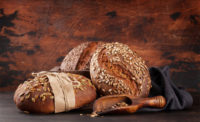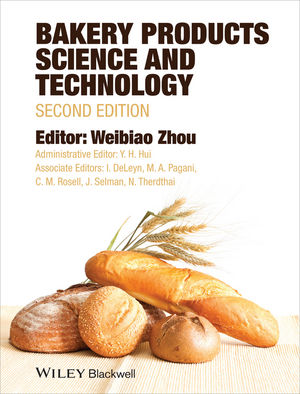They say that beauty is in the eye of the beholder. So, too, is “better-for-you,” the catch-all classification that drives so many consumers these days and, as such, is driving snack and bakery development, as well.
But whatever better-for-you looks like to its beholders, to snack and bakery brands it’s all about equilibrium.
As Courtney LeDrew, senior marketing manager, Cargill (Minneapolis), says, “Delivering sweet or savory snacks and baked goods with a health halo—whether from less sugar or added plant protein—can be a delicate balancing act.”
Why? “The often-competing demands of better-for-you formulation,” says LeDrew. “These are indulgent categories, and consumers have high expectations for taste and texture. Executing on all counts is key to success.”
Hungry for health
Better-for-you or not, the snack and bakery categories have seen considerable action these past 12 months.
Notes Richard Horsley, sales director, Paradise Fruits Solutions by Jahncke, Drochtersen, Germany, “Snacks and baked treats offer a sense of comfort and positivity, which is especially important to making the current situation easier.” Citing Mintel research on snacking motivations, he says that 50 percent of consumers snack to treat themselves, 37 percent use snacks to take a break, and 24 percent say snacking helps relieve stress.
So given the emotional refuge consumers take in their favorite snacks and baked goods, are they ready to treat these treats as vehicles for “better-for-you”?
Apparently, they are. Notes Anne Marie Halfmann, senior manager, channel marketing, Dawn Foods, Jackson, MI, “The market for better-for-you snacks and baked goods continues to be strong. Even when sales and traffic were lower during the pandemic, we still saw growth in the better-for-you category and expect this growth to continue.”
Sue Butler, technical category manager for nutrition, bakery and confectionary, Tate & Lyle, Hoffman Estates, IL, agrees, adding that 40 percent of all new snack and bakery launches last year in the Mintel GNPD were positioned as better-for-you. “That gives brands an opportunity to launch new products or renovate current ones to attract health-conscious consumers without alienating their core,” she says.
Defining moments
But first, they have to get clear on how those consumers—core or otherwise—define “better-for-you.” And the answer isn’t always clear.
“Across categories,” LeDrew says, “consumers are looking for choices they perceive as healthier—but what that means is open to interpretation.”
Common themes she’s noticed include fortifying products with “nutritional heavyweights” like fiber, whole grains and plant proteins—which she predicts “will remain a big draw”—and the heightened awareness of gut-health and immunity-boosting ingredients, even in snacks and baking, that swept in with the pandemic.
“In a post-lockdown world,” LeDrew continues, “we may see more emphasis on lower total added sugars and products for diets like keto and paleo, as consumers address pandemic-inspired weight gain.” Finally, she expects brands to continue striving for “natural,” gluten-free, no-preservative, non-GMO and organic positioning.
But even that exhaustive inventory doesn’t describe it all. “Recognizable ingredients are one of the main differentiators consumers use to identify healthy snacks and bakery products,” notes Laura Gerhard, director of strategy and marketing, Blue Diamond Almonds Global Ingredients Division, Sacramento, CA. She points to Innova Market Insights data showing that 91 percent of U.S. consumers associate recognizable ingredients with a product’s increased healthfulness.
And when Lesaffre, Milwaukee, commissioned C+R Research to survey clean-label bread consumers, results showed that while those consumers continue to read labels and will even pay more for products made with “trustworthy” ingredients, broader concepts ultimately shape their decisions. Namely, says Bill Hanes, Lesaffre’s vice president of marketing and strategy, “They identify with an overall healthy lifestyle and wellness,” often characterizing their eating style as “balanced, fresh or whole.”
Yet even for these respondents, the key driver was—surprise—enjoyment. “In this context,” Hanes concludes, “the popularity of better-for-you snacks and baked goods makes perfect sense. While consumers eat for overall health and wellness, they aren’t giving up their favorite treats entirely.”
Evolving toolboxes
The logical corollary to that conclusion, Hanes continues, is that “brands that deliver snacks and bakery items that taste good and also have better-for-you benefits will rise to the top.”
Alas, wrapping all those deliverables—plus operational ease and shelf stability—into one snack or bakery package is simpler said than done.
For example, says Steven Gumeny, regional product manager, rice ingredients and functional proteins, BENEO Inc., Parsippany NJ. “In many cases, ingredients unpopular with consumers are integral to a developer’s toolbox, and often for good reason. Eliminating or using less of them can leave formulation gaps that can be challenging to fill without negatively impacting taste, texture or processing.”
Take chemically modified starches, for instance, which withstand extremes of heat, pH and shear. “Replacing them with native starches can produce the clean labels consumers want,” Gumeny says, “but ordinary native starches break down under harsh conditions and create textural and processing problems.” He says that functional native starches with enhanced process tolerance, like BENEO’S Remypure functionalized native rice starches, offer an alternative, and even appear on labels simply as “rice starch.”
Hanes notes that “intimidating” emulsifiers like sodium stearoyl lactylate and diacetyl tartaric acid esters of mono- and diglycerides are so common in bakery because they help forestall staling, improve gas retention, provide aeration, and more. “Past attempts to replace them with clean-label alternatives have resulted in inferior products and baked goods that’re difficult to process consistently,” he says.
And Halfmann points out that even eliminating bleached flour can have unintended consequences, from lost structure, volume and crumb, to poorer eating quality. Heat-treated flours are one alternative, she says, and adds that, in some cases, enzymes “improve crumb and texture and assist with eating quality when longer shelf life is needed.”
“A big goal for us,” Halfmann continues, “is to improve better-for-you shelf life so that bakers can trim costs while delivering the products consumers want.” In addition to heat-treated flours, solutions she suggests include fibers that improve viscosity and crumb texture, and soy protein isolates that do yeoman’s work replicating the functionality of animal proteins in vegan products.
Sugar solutions
Sugar reduction is another avenue to better-for-you. “Due to the uptick in consumer demand for reduced-sugar options, Citri-Fi also is used to formulate reduced-sugar fruit preparations,” says Sheila McWilliams, technical sales manager, Fiberstar, Inc., River Falls, WI. “This clean-label technology is ideal for those who are focusing on natural ingredients to improve texture, food labeling, and the nutritional profile in snack bars and bakery fillings. Citri-Fi not only improves the texture in reduced-sugar fruit preps, but also, contributes dietary fiber.”
But cutting sugar levels poses challenges, especially in light of sugar’s formulation functionality.
“Sugar contributes to everything from spread and browning in cookies to tenderness and aeration in cakes,” notes Tim Christensen, a certified master baker and R&D bakery applications specialist at Cargill.
“Sugar also impacts gelatinization temperatures,” adds David Nichols, development and planning manager, Tate & Lyle, “which affects how a baked good’s crumb structure sets in the oven. And it can affect leavening action, too, which also changes crumb structure.”
Non-sugar sweeteners that perform sugar’s functions—and deliver its sweet taste without its calories—are sought-after solutions. And though no silver-bullet substitute has saved formulators’ day, Nichols contends that Tate & Lyle’s Dolcia Prima allulose sweetener comes close, adding sweetness and bulk without appearing as “added sugars” on Nutrition Facts labels.
Nichols notes that the ingredient can lower batter viscosity and increase baked-good browning, which can be troublesome in applications, but that pairing it with a soluble fiber, such as Tate & Lyle’s Promitor soluble corn fiber, helps balance those effects.
Sheri O’Brien, vice president, sales and marketing, BioNeutra North America Inc., Edmonton, Alberta, notes that isomalto-oligosaccharide, or IMO, sweeteners are also attracting attention in better-for-you formulations. Comprising a mix of digestion-resistant short-chain carbohydrates, the sweeteners recreate sugar’s bulk, textural properties and sweetness profile with an average caloric contribution of only 1 to 2 kcal/gram.
Last September, BioNeutra launched its IMO-based VitaFiber Plus, which O’Brien calls a “low-calorie sweetener, prebiotic and soluble dietary fiber all in one.” She describes its flavor as “like mild honey,” and says it’s an excellent blending and bulking agent for high-intensity sweeteners like stevia and monk fruit extract—the off notes of which its taste profile can help mask.
Functional fibers
“Recently, consumers are looking for products that support healthy food choices in addition to providing a sustainable story,” says Sheila McWilliams, technical sales manager, Fiberstar, Inc., River Falls, WI. “Citri-Fi is an upcycled ingredient produced from byproduct of the citrus juicing industry. The patented process does not use solvents or strip the material of its natural structure. At low usage levels, 0.2 percent to 1.0 percent, this natural ingredient provides high water-holding and natural emulsification properties that improve various better-for-you bakery products. For instance, Citri-Fi is ideal for gluten-free or grain-based bakery products, because this citrus fiber provides tender crumb structure, soft bite, and improves overall product quality. Gluten-free bakery products tend to dry out quickly and produce a stale cardboard texture. However, when using Citri-Fi, gluten-free baked goods retain moisture to improve the perception of freshness over time.”
Citri-Fi also can benefit keto-based bakery items, notes McWilliams. “This natural citrus fiber’s emulsification properties help create clean-label products containing various oil-based ingredients. Since Citri-Fi contributes dietary fiber, this natural citrus fiber does not add to the net carbohydrates.”
Ingredient that cut sugar while contributing fiber kill two better-for-you birds with one stone. And Hannah Ackermann, registered dietitian, Comet Bio, Schaumburg, IL, believes that demand for such functional fibers will rise along with interest in digestive health.
Snacks and baked goods are “already in a good position to capitalize on this increased interest,” she argues, “as many of these products are already rich in dietary fiber and can be supplemented with prebiotic fiber to add an extra boost for the microbiome.”
Cargill’s Oliggo-Fiber chicory root fiber does just that, stimulating growth of Bifidobacteria species at doses as small as 5 grams per day. “As an added bonus,” notes Christensen, “it also aids in sugar and calorie reduction, and acts as a bulking agent.”
Not to be outdone, Ackermann offers Comet Bio’s Arrabina arabinoxylan as another option that, per clinical research, promotes Bifidobacteria growth at only 2.2 grams consumed per day—“less than half the level required of other prebiotic ingredients,” she says. These lower dosage and inclusion rates make the ingredient “a better value that’s easier to incorporate into existing products and gentler on the stomach” than chicory root inulin, she says.
And while plenty of formulators turn to isolated fiber ingredients for better-for-you products, Paradise Fruits’ Horsley says his company has seen “a noticeable increase” in requests for fruit-based sources of fiber. Their Fruit First Fibre product, for example, comes in the form of single- or mixed-fruit granulates, pastes, drops and shapes with 40 percent less sugar—naturally occurring, Horsley notes—than standard fruit ingredients. Best of all, they supply more than 40 grams of fiber per 100-gram serving. He suggests using them as inclusions in cereals, baked goods and snack bars, or even as standalone snacks.
Plant proteins
Christensen adds that formulators hunting for healthful inclusions can also choose fiber- and protein-fortified compound chocolate coatings, “offering even more avenues to nutritional enrichment,” he says. “These inclusions are perfect for use inside baked goods like cookies and muffins, while our coatings can be used for bottoming, enrobing or drizzling onto snack bars, pretzels and more.”
But working proteins—especially trending plant-based options—into inclusions and finished snack and baked goods alike illustrates the classic hurdles that confront better-for-you formulation.
For example, Christensen explains, “Water management is a challenge when working with protein in baked goods.” Proteins are notoriously thirsty and can outcompete other ingredients for available moisture. “So to help prevent dryness,” he says, “we’ve learned it’s best to allow time for proteins to hydrate. And in some formulas, replacing granulated sugar with corn syrup, liquid sugar or honey can create additional moisture. We’ve also found that some enzymes improve texture.”
Another common challenge involves taste issues. Here, Christensen suggests working with plant proteins known for their mild flavor profile, like Cargill’s Puris pea protein, which the company sources from pea varieties selected for their neutral flavor. His team’s used it in “great-tasting” muffins that deliver 5 grams of protein per serving, and in “indulgent cookies that appeal to consumers interested in nutrient-dense snacks,” he says.
Naturally better
Also adding nutrient-dense, clean-tasting plant protein, Gerhard says, is Blue Diamond’s almond protein powder. “Combining almond protein powder with other complementary plant-based proteins helps formulators more easily achieve protein targets in snacks and baking,” she notes. “It’s an ideal protein base to blend with, adding fiber and strong front-of-label benefits.”
Even better, the almonds the powder comes from embody the naturally healthful, whole-food ingredients that better-for-you consumers increasingly want to see in their snacks and baked goods. No wonder Innova’s latest Global New Products Report ranks almonds a leading ingredient in global snack introductions, Gerhard says.
“Almonds can also incorporated into batters for cookies, breads and other baked goods, and used as toppings to create a premium look on finished products,” she continues. And she offers almond flour as “an ideal substitute for traditional flour,” yielding treats that “typically have less sugar, oil and fat and important nutrients often lacking in commercial baked goods, such as fiber, calcium and vitamin E.”
Wouter Stomph, North America head of ingredient development and innovation, Olam Cocoa, Willowbrook, IL, also acknowledges that “consumers want more ingredients with naturally occurring health benefits. For this reason, we’re seeing growing interest in cocoa ingredients, which are rich in minerals like magnesium, potassium and zinc.”
But when clean labels are on the agenda, even a declaration like “cocoa processed with alkali” may confuse consumers and discourage purchase. Thus, Olam Cocoa created deZaan TrueDark non-alkalized dark cocoa powder, which appears on labels simply as “cocoa.”
Stomph adds that the company has developed a black cocoa powder with no added sodium. “Depending on the formulation,” he says, “snack and bakery brands can reduce sodium levels by 25 percent just by switching cocoas.”
Finally, he says, ingredients like cocoa can make better-for-you even better by telling a positive story—if they’re responsibly sourced. “Consumers like to know where their food comes from,” Stomph notes. “Not just the finished product, but the ingredients, too.”
Olam Cocoa’s AtSource sustainability-insights platform lets users track a cocoa’s origin and social and environmental impact from pod to product. “So tell them a story,” Stomph says. “And choose clean, straightforward, high-quality ingredients. Keep it simple!”
For many consumers, that may be the best better-for-you definition there is.










